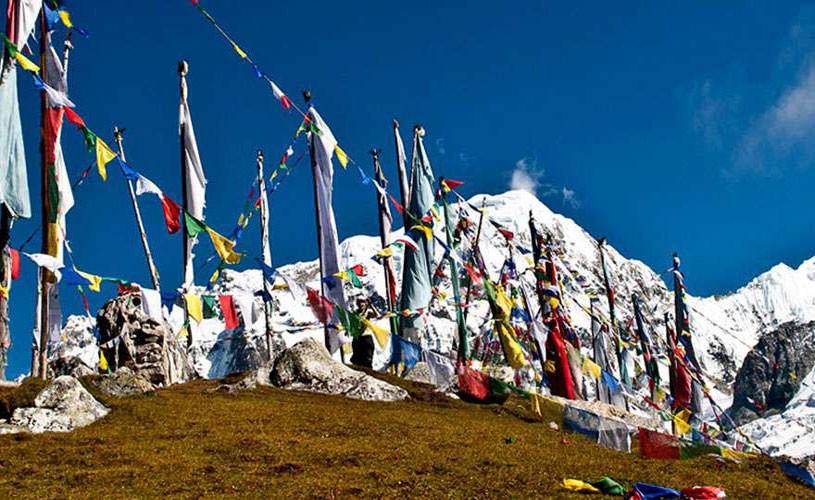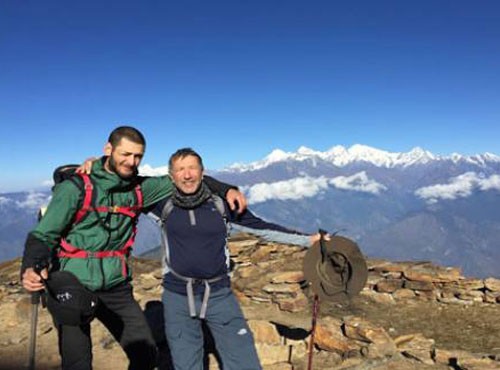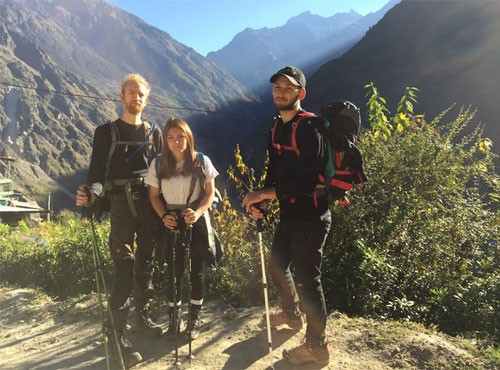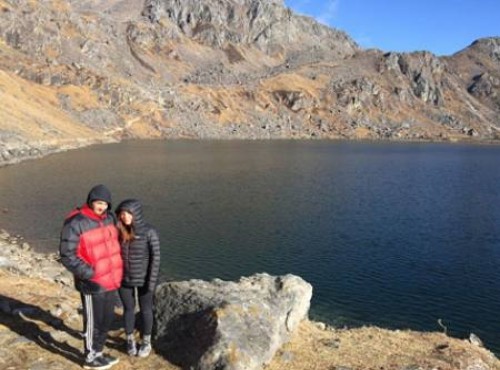Tamang Heritage Trek Highlights:
- UNESCO World Heritage Sites in Kathmandu
- Cultural trek along Tamang Heritage Trail in Langtang Valley
- Less-crowded trekking destination in Nepal
- Centuries-old monastery in Gatlang
- Immerse in ethnic Tamang culture, lifestyle
- Up-close view of the gigantic Himalayan range including — Ganesh, Langtang, Gosainkunda
- Biological diversity — wide varieties of flora, fauna
- Exotic wildlife — troops of Grey Langur, threatened endangered Red panda
- Homestay with local families to experience their daily lifestyles
- Insight into the remote lifestyle of people living in the mountains
- Trek as a medium to support the rural economy of local communities
Tamang Heritage Trek: A Cultural and Scenic Journey
The Tamang Heritage Trek offers an enriching cultural experience, immersing you in the traditions and lifestyles of the Tamang people, one of Nepal’s 101 ethnic groups. Set amidst the stunning landscapes of the Langtang Region, the trek weaves through picturesque villages nestled in the lap of the majestic Himalayas. This unique trekking route combines breathtaking scenery with the warm hospitality and rich cultural heritage of the Tamang community, making it an unforgettable adventure.
A Unique Trekking Route Developed for Cultural Exploration
The Tamang Heritage Trek is a newly developed route established by the Tourism for Rural Poverty Alleviation Program (RPAP). It presents a fantastic opportunity to delve into Tamang history, culture, and its deep-rooted connection with Tibetan civilization. Most Tamang people are farmers or traders, and their daily lives offer a glimpse into Nepal’s rural traditions. Along the trail, trekkers encounter lush forests teeming with wildlife, cascading waterfalls, serene meadows, and sacred lakes like Bhirab Kunda and Gosainkunda. Highlights include visits to traditional Tamang monasteries and the sacred Parvati Kunda Lake.
Journey Through Vibrant Villages and Iconic Landscapes
The trek begins with a visit to Tatopani, meaning “hot water” in Nepali, where natural hot springs are believed to possess healing properties. From Tatopani, the trail leads to Thuman, a village renowned for its open grasslands, shamanic traditions, and spectacular Himalayan views. Continuing along the ancient trade route to Tibet, you’ll arrive at Briddim, a quaint Tamang village just three hours from the Tibetan border. Here, you can visit Dukchu Gompa, a sacred Buddhist monastery.
As the trek progresses, you’ll venture into the dense forests of the Langtang Valley, where red pandas roam freely. After reaching the Lama Hotel, the journey continues to the village of Langtang. At Ghoda Tabela (horse stable), permits are checked before ascending to Kyanjin Gompa, the trek’s highest point. This area offers jaw-dropping vistas of snow-capped peaks like Langtang Lirung (7,227m) and Langtang II (6,586m).
Exploring Kyanjin Gompa and Beyond
An extra day at Kyanjin Gompa allows for an exploration of its ancient monasteries and a visit to a local cheese factory. Adventurous trekkers can hike to the Tserko Ri Viewpoint for panoramic views of towering Himalayan peaks. The return journey retraces the route through the Lama Hotel, ending in Syabrubesi, from where a bus will take you back to Kathmandu.
A Trek to Remember
The Tamang Heritage Trek combines cultural immersion, natural beauty, and spiritual exploration. From sacred lakes to ancient monasteries and mesmerizing Himalayan vistas, this trek offers an unparalleled glimpse into Nepal’s rich ethnic tapestry. Whether you’re seeking adventure or cultural enlightenment, this journey promises memories to last a lifetime.
Best Time for Trekking in the Langtang Region
The Langtang region offers incredible trekking experiences throughout the year, but choosing the right season can greatly enhance your journey.
When to Trek
Best Time: October to May (dry season)
Challenging Time: June to September (monsoon season)
During the monsoon, trekking can be difficult due to heavy rain, muddy trails, and leeches. However, some trekkers prefer this season for its quiet trails and lush landscapes, as there are fewer visitors.
Autumn Season (September to December)
Autumn is the most popular time for trekking in Nepal. From mid-September to mid-December, the weather is clear and stable, making it ideal for trekking. The skies are washed clean by monsoon rains, offering spectacular views of the mountains. Temperatures are mild, and the trails are dry and comfortable. However, December can bring colder temperatures and snow at higher altitudes, so proper preparation is essential.
Spring Season (February to May)
Spring is another excellent time for trekking. The trails come alive with blooming rhododendrons and other wildflowers, adding vibrant colors to the scenery. Although visibility can be slightly reduced due to dust in the air, the mild temperatures and beautiful landscapes more than compensate for it. This season is perfect for both trekking and exploring the natural beauty of the Langtang region.
Meals During the trek
Breakfast, lunch, and dinner will be provided during the trek, and breakfast will only be provided in Kathmandu. We host welcome and farewell dinners for our guests. During the trek, we have breakfast and dinner at tea houses or lodges where we spend nights, and lunch at tea houses will be served on the way. You have the option to choose from Nepali, continental, Tibetan, and Indian cuisines. As we care for our guests, we ensure you are getting healthy food. We prioritize locally produced organic food and also provide you with seasonable fruits. During the climbing session, hygienic, freshly cooked food will be provided.
Note: If you are a vegetarian, let us know in advance so that we can make proper arrangements for food as per your wish during the trek
Accommodation during the Trip
You will be accommodated in a three-star standard hotel in Kathmandu and the best available teahouses during the trek. All accommodations are on a twin-shared basis. A single supplement will be served on request and will cost an additional. Since you will be trekking in remote regions, the services in the teahouses/guesthouse will be essential. We will try our best to arrange rooms with attached washrooms; however, some teahouses still need attached bathrooms.
Drinking Water during the Trip
Adventure Club provides all the meals on the trek but needs to provide Water. The best option is to treat the local Water with chlorine/iodine tablets or a steripen. The tea houses will give you good quality free water, and you can also get along the trail, but you will need to treat it. If you use the tablets, make sure they dissolve completely (about 30 mins). On most treks, you can buy mineral water along the trail. A liter of mineral water at lower-elevation tea houses costs around USD 1, but at higher elevations, it can cost up to $4, so the cost can add up.





